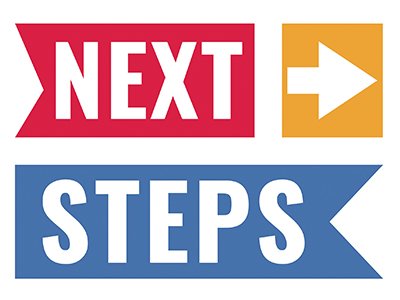Preeclampsia is a condition characterized by pregnancy-induced hypertension (a blood pressure of 130/80 or above) and the presence of protein in the urine (fancy name: proteinuria), that develops after 20 weeks of pregnancy.
Who Gets Preeclampsia?
The jury is still out on exactly why preeclampsia occurs, but it’s been shown that certain risk factors can increase a woman’s chances of getting it.
For Example, Women Most Likely to Develop Preeclampsia Are:
- Under 18 years old OR over 40 years old.
- Pregnant with multiples (twins or more!).
- Obese (with a pre-pregnancy Body Mass Index over 30).
- Pregnant with their first baby (fancy name: nulliparous).
- African American.
Additional Risk Factors Include:
- High blood pressure, diabetes, or kidney disease prior to pregnancy.
- Sisters or mothers with a history of pregnancy-induced hypertension.
How is Preeclampsia Diagnosed?
Pregnant women must meet the following criteria to be diagnosed with Preeclampsia:
1. A high blood pressure (≥ 130/80mmHg) starting after 20 weeks of pregnancy (meaning the blood pressure was normal before 20 weeks).
2. Protein in the urine. This is one of the reasons doctors ask pregnant women to pee in a cup at every visit.
When Does Preeclampsia Happen?
Preeclampsia typically occurs during the 3rd trimester (although it can be seen during the 2nd trimester (after 20 weeks), as well.
PediaTrivia: It’s possible to develop preeclampsia AFTER giving birth which is why your doctor will continue to monitor your blood pressure for a little while after delivery.
What Will I Notice if I Develop Preeclampsia?
Preeclampsia Ranges in Severity. Common Symptoms Include:
- Severe headaches that seem to pop up out of nowhere.
- Blurry vision.
Reality Check: Women naturally tend to have worsening vision during pregnancy, so it’s not always clear whether their blurry vision is benign or if it’s something to worry about. Therefore, ALL blurry vision during pregnancy warrants a call to the doctor.
- Upper abdominal pain (especially on the right side).
- Nausea and vomiting during the second half of pregnancy.
- Chest pain and trouble breathing.
- Swelling of the legs, feet, hands, and face.
Clue: The scale may suddenly show a big weight gain.
Reality Check: It’s normal to develop some swelling of the hands, legs, and feet during pregnancy but if the swelling increases rapidly or extends to your face, call your doctor. If you can’t tell what’s going on, play it safe and ask your doctor for his/her input.
Ok, I Have Preeclampsia. How Will My Doctor Treat It?

Your Doctor’s Approach to Treating Your Preeclampsia Will Depend on How Severe Your Preeclampsia is and How Far Along You are in Your Pregnancy.
Scenario 1: If the Preeclampsia is Mild and It’s Early in Your Pregnancy, You’ll Be Observed Closely.
Close Observation Entails:
- Limited activity. Although strict bedrest hasn’t been proven to help with preeclampsia (and can actually increase the risk of a blood clot in the legs), most doctors encourage women with preeclampsia to “take it easy.” If you develop preeclampsia, expect to spend some quality time on your couch, binge-watching Netflix shows.
- Daily blood pressure checks (at home): Your doctor will either provide you with an automated blood pressure machine or ask you to purchase (or rent) one to use at home.
- Frequent OB/GYN visits with regular urine checks and lab work.
- Periodic tests (such as nonstress tests, stress tests, or biophysical profiles) to make sure that your baby remains happy in the womb. Get Wise about these tests here.
- Medications (if needed) to help lower your blood pressure.
Scenario 2: If Your Preeclampsia is Severe and You’re 37 Weeks Pregnant (or More), Your Doctor Will Probably Recommend That You Deliver Your Baby.
Scenario 3: If Your Preeclampsia is Severe and You’re Less Than 37 Weeks Pregnant, Your Doctor Will Try to Delay the Delivery. He/She Will Also Give You a Steroid Injection to Help Mature Your Baby’s Lungs. You’l’l Probably Have to Stay in the Hospital for Monitoring During This Time.
What Are the Next Steps if I Have Severe Preeclampsia and the Doctor Says I Have to Give Birth Pronto?

Women with severe preeclampsia will typically have a high-risk OB/GYN (fancy name: a perinatologist) deliver their baby. In addition, a neonatologist (a doctor who specializes in high-risk newborn issues) will probably be asked to attend the delivery (just in case the baby is struggling at birth).
If the Doctor Has to Deliver Your Baby ASAP, You’ll Be Given:
1. Medications to control your blood pressure.
2. A medication called magnesium sulfate through an IV to prevent seizures (i.e. to prevent your preeclampsia from progressing to “eclampsia”). The magnesium sulfate will be given to you during labor & delivery AND in the hospital after your baby is born.
Reality Check: Magnesium sulfate is a pain in the neck to administer because it has a narrow “therapeutic window.” This means that if the doctor gives too little it doesn’t work, and if he/she gives too much it can cause magnesium toxicity (read: unwanted side effects). These side effects include vision problems, flushing of the skin, breathing problems, and loss of the “knee jerk” reflex (the reflex that makes you kick your lower leg out when your knee is hit with a hammer).
Because of this, you’ll have to be monitored closely to make sure that your magnesium sulfate dose is appropriate and you don’t develop any undesirable side effects.
What Happens if the Preeclampsia Isn’t Treated?
Without treatment, preeclampsia can progress to eclampsia, or worse, to HELLP syndrome (see below). Both conditions can create worrisome problems for you and your developing baby. The main issue with these conditions is that the placenta takes a beating and doesn’t work as well. This can lead to:
- A restriction in your baby’s growth.
- Too little amniotic fluid (fancy name: oligohydramnios).
- A placental abruption (in which the placenta prematurely separates from the wall of the uterus).
- Premature delivery (before 37 weeks).
A Word About Eclampsia & HELLP Syndrome

Preeclampsia, Eclampsia, and HELLP syndrome represent a continuum of pregnancy complications characterized by high blood pressure. Get Wise(r) about Eclampsia and HELLP Syndrome below…
Eclampsia
Eclampsia is basically preeclampsia (hypertension & protein in the urine) PLUS seizures. When a woman’s preeclampsia worsens, it can progress to eclampsia.
HELLP Syndrome
HELLP syndrome, the most severe of the three conditions, is a rare but extreme form of preeclampsia. Although it’s only seen in 0.1-1% of pregnancies, it needs to be taken seriously when it does occur.
What Does the HELLP Acronym Stand For?
In addition to high blood pressure & protein in the urine, pregnant women with HELLP syndrome experience the following:
- H = Hemolysis. In this case, the red blood cells break down and Mom-to-be becomes severely anemic.
- EL = Elevated liver enzymes (because the liver isn’t functioning properly).
- LP = Low platelets (which means Mom-to-be is having trouble clotting her blood).
These problems are serious and can lead to a stroke, kidney failure, and eye problems in Mom.
Heads Up: If you develop HELLP Syndrome and your platelets are super low, then you may not be able to get an epidural.
Ugh! Why Not? Because you won’t be able to clot your blood effectively and, as a result, you could experience excessive bleeding at the spot where the needle goes in.
When Does HELLP Syndrome Occur?
It usually occurs during the 3rd trimester. As with preeclampsia, HELLP Syndrome can happen during the postpartum period, as well (i.e. after the baby is delivered).
Who Gets HELLP Syndrome?
The #1 risk factor for HELLP Syndrome is a previous history of preeclampsia or HELLP Syndrome. Additional risk factors include:
- Obesity.
- African American ethnicity.
- Carrying multiples.
- Having underlying hypertension, kidney disease, or diabetes.
How Are Babies Affected by HELLP Syndrome?
Babies whose Moms develop HELLP syndrome may be born prematurely and their growth might be restricted. If these babies aren’t delivered ASAP, there’s a risk of stillbirth (death in utero), too. This is rare, though.
How is HELLP Syndrome Managed?
HELLP syndrome is a medical emergency and the baby should delivered immediately, no matter what.
The Bottom Line
Your doctor will monitor you for preeclampsia by checking your blood pressure & your urine throughout your pregnancy. By doing this, he/she will hopefully catch any preeclampsia that develops (before it can progress to eclampsia or HELLP Syndrome).





